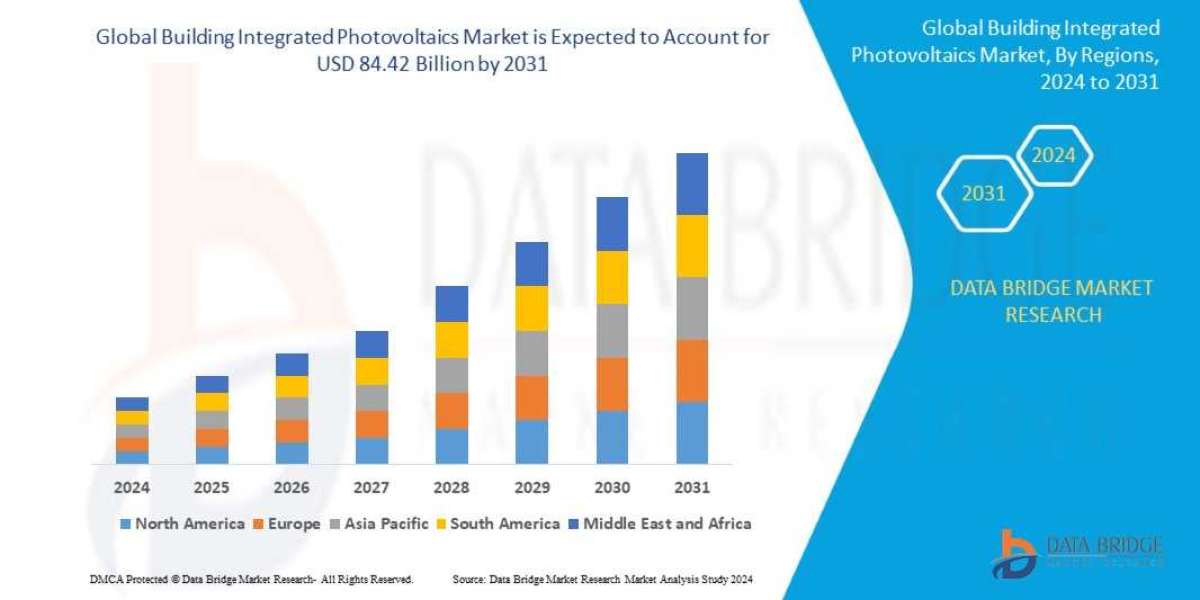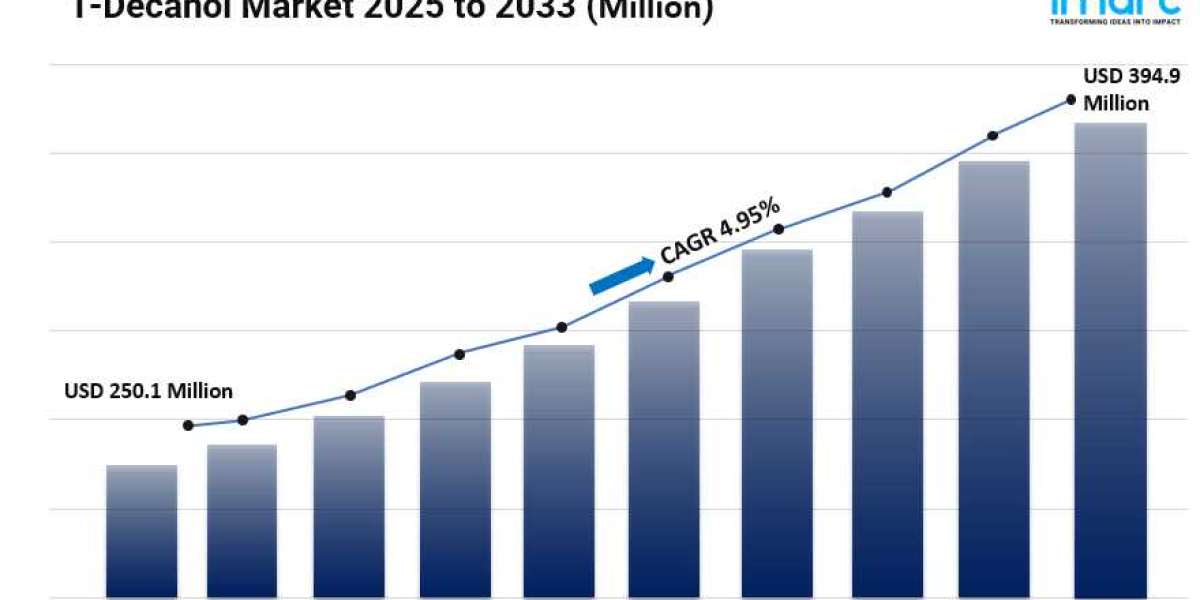"Building Integrated Photovoltaics Market Size And Forecast by 2031
Global building integrated photovoltaics market size was valued at USD 24.29 billion in 2023 and is projected to reach USD 84.42 billion by 2031, with a CAGR of 16.85% during the forecast period of 2024 to 2031.
Building Integrated Photovoltaics Market research report provides a comprehensive analysis of the market. The report aims to provide insights into Building Integrated Photovoltaics Market trends, growth opportunities, key drivers and challenges, competitive landscape, and other crucial factors that may impact the market in the forecast period (2024-2031).
Get a Sample PDF of Report - https://www.databridgemarketresearch.com/request-a-sample/?dbmr=global-building-integrated-photovoltaics-market
Which are the top companies operating in the Building Integrated Photovoltaics Market?
The study report on the Global Building Integrated Photovoltaics Market offers a comprehensive analysis of the industry, highlighting key trends, market dynamics, and competitive landscape. It profiles prominent organizations operating in the market, examining their successful strategies and market share contributions. This Building Integrated Photovoltaics Market report provides the information of the Top 10 Companies in Building Integrated Photovoltaics Market in the market their business strategy, financial situation etc.
**Segments**
- By Product (Rooftop, Cladding, Glazing, Shades)
- By Technology (Crystalline Silicon, Thin Film, Others)
- By End-User (Residential, Commercial, Industrial)
Building Integrated Photovoltaics (BIPV) have become a popular choice for sustainable energy solutions in the construction industry. The market can be segmented based on product, technology, and end-user categories. In terms of product, BIPV systems can be categorized into rooftop installations, cladding applications, glazing integration, and shades. Rooftop BIPV systems are designed to seamlessly blend into existing roofs, providing a dual purpose of generating electricity and acting as a protective shield. Cladding BIPV involves integrating solar panels into the outer structure of buildings, enhancing aesthetics while generating clean energy. Glazing BIPV integrates solar modules into windows and facades, allowing for natural light transmission while harnessing solar power. BIPV shades are designed to provide shade while converting sunlight into electricity, ideal for outdoor spaces and parking structures.
Regarding technology, BIPV systems primarily utilize crystalline silicon solar cells, which are efficient and widely used in the industry. Thin-film technology is another common option for BIPV, offering flexibility and light-weight characteristics perfect for various building surfaces. Other technologies, such as organic photovoltaics or dye-sensitized solar cells, are emerging in the BIPV market, promising innovative solutions for sustainable energy generation in buildings.
The end-user segmentation of the global BIPV market includes residential, commercial, and industrial sectors. Residential BIPV systems are increasingly popular among homeowners looking to reduce energy costs and lower their carbon footprint. Commercial buildings, such as offices, retail spaces, and public facilities, are incorporating BIPV solutions to meet sustainability goals and enhance their green credentials. Industrial applications of BIPV focus on large-scale installations in manufacturing plants, warehouses, and industrial complexes to offset energy consumption andThe global BIPV market is witnessing significant growth driven by increasing awareness of sustainability, government incentives, and advancements in solar technology. With the construction industry focusing more on energy-efficient and eco-friendly solutions, BIPV systems have emerged as a viable option to meet these demands. The product segment plays a crucial role in catering to diverse needs across different applications. Rooftop BIPV systems are particularly popular in residential and commercial buildings where space utilization is a key consideration. The ability to seamlessly integrate solar panels into roofs without compromising aesthetics has made rooftop installations a preferred choice for many property owners.
Cladding BIPV has gained traction in the commercial sector, where building facades serve as an opportunity to leverage solar energy production without compromising architectural design. The integration of solar panels into cladding materials not only enhances the overall look of the building but also contributes to its energy efficiency. Glazing BIPV systems, on the other hand, are ideal for structures that require natural light penetration while harnessing solar power. This type of BIPV is commonly seen in office buildings, hotels, and residential complexes where maximizing daylighting and energy production are essential.
Shades BIPV is a niche segment that caters to outdoor spaces and parking structures. By providing shade while generating electricity, these systems offer a dual benefit of environmental protection and renewable energy production. The technology segment of the BIPV market is witnessing continuous innovation with the development of new materials and manufacturing processes. Crystalline silicon remains the dominant technology due to its high efficiency and reliability, making it suitable for a wide range of applications.
Thin-film technology is gaining popularity in BIPV systems due to its flexibility and lightweight characteristics, making it ideal for curved or irregular surfaces. Other emerging technologies like organic photovoltaics and dye-sensitized solar cells hold promise for future BIPV applications, offering unique features such as transparency and color options. The end-user segmentation reflects the diverse adoption of BIPV across residential, commercial,**Market Players:**
- Merck KGaA (Germany)
- Trina Solar (China)
- CertainTeed, LLC. (France)
- Tesla (USA)
- JA Solar (China)
- Canadian Solar (Canada)
- Changzhou Almaden Co. Ltd (China)
- Waaree Energies Ltd. (India)
- Hanergy Thin Film Power Group (China)
- Kyocera Corp. (Japan)
- Heliatek GmbH (Germany)
- Onyx Solar Group LLC. (Spain)
- MetSolar (Taiwan)
- The Solaria Corporation (US)
- Suntegra (U.S.)
**Market Analysis:**
The global Building Integrated Photovoltaics (BIPV) market is witnessing significant growth propelled by the growing awareness of sustainability and the increasing adoption of renewable energy solutions in the construction industry. The market segmentation based on product, technology, and end-user categories provides a comprehensive understanding of the diverse applications and preferences within the BIPV market.
In terms of product segmentation, the versatility of BIPV systems catering to different needs across various segments such as rooftops, cladding, glazing, and shades reflects the adaptability of solar technology in integrating seamlessly into building structures. Rooftop installations and cladding applications have garnered substantial interest in both residential and commercial sectors due to their dual functionality of generating electricity and enhancing architectural aesthetics.
Technological advancements play a crucial role in shaping the BIPV market landscape, with crystalline
Explore Further Details about This Research Building Integrated Photovoltaics Market Report https://www.databridgemarketresearch.com/reports/global-building-integrated-photovoltaics-market
Regional Analysis For Building Integrated Photovoltaics Market
North America (the United States, Canada, and Mexico)
Europe (Germany, France, UK, Russia, and Italy)
Asia-Pacific (China, Japan, Korea, India, and Southeast Asia)
South America (Brazil, Argentina, Colombia, etc.)
The Middle East and Africa (Saudi Arabia, UAE, Egypt, Nigeria, and South Africa)
Why B2B Companies Worldwide Rely on us to Grow and Sustain Revenues:
- Get a clear understanding of the Building Integrated Photovoltaics Market, how it operates, and the various stages of the value chain.
- Understand the current market situation and future growth potential of the Building Integrated Photovoltaics Market throughout the forecast period.
- Strategize marketing, market-entry, market expansion, and other business plans by understanding factors influencing growth in the market and purchase decisions of buyers.
- Understand your competitors’ business structures, strategies, and prospects, and respond accordingly.
- Make more informed business decisions with the help of insightful primary and secondary research sources.
This report provides Global Building Integrated Photovoltaics Market :
- An in-depth overview of the global market for
- Building Integrated Photovoltaics Market Assessment of the global industry trends, historical data from 2015, projections for the coming years, and anticipation of compound annual growth rates (CAGRs) by the end of the forecast period.
- Discoveries of new market prospects and targeted marketing methodologies for Global Building Integrated Photovoltaics Market
- Discussion of RD, and the demand for new products launches and applications.
- Wide-ranging company profiles of leading participants in the industry.
- The composition of the market, in terms of dynamic molecule types and targets, underlining the major industry resources and players.
- The growth in patient epidemiology and market revenue for the market globally and across the key players and Building Integrated Photovoltaics Market segments.
- Study the market in terms of generic and premium product revenue.
- Determine commercial opportunities in the market sales scenario by analyzing trends in authorizing and co-development deals.
Understanding market trends and industry insights at a regional level is essential for effective decision-making. Our reports are available in multiple regional languages to cater to diverse audiences. These localized reports provide in-depth analyses tailored to specific regions, ensuring businesses and stakeholders can access accurate and relevant information. By offering insights in local languages, we aim to bridge communication gaps and empower regional markets with the knowledge they need to grow and thrive. Explore our reports in your preferred language for a more personalized understanding of industry dynamics.
Japanese : https://www.databridgemarketresearch.com/jp/reports/global-building-integrated-photovoltaics-market
Chinese : https://www.databridgemarketresearch.com/zh/reports/global-building-integrated-photovoltaics-market
Arabic : https://www.databridgemarketresearch.com/ar/reports/global-building-integrated-photovoltaics-market
Portuguese : https://www.databridgemarketresearch.com/pt/reports/global-building-integrated-photovoltaics-market
German : https://www.databridgemarketresearch.com/de/reports/global-building-integrated-photovoltaics-market
French : https://www.databridgemarketresearch.com/fr/reports/global-building-integrated-photovoltaics-market
Spanish : https://www.databridgemarketresearch.com/es/reports/global-building-integrated-photovoltaics-market
Korean : https://www.databridgemarketresearch.com/ko/reports/global-building-integrated-photovoltaics-market
Russian : https://www.databridgemarketresearch.com/ru/reports/global-building-integrated-photovoltaics-market
Data Bridge Market Research:
Contact Us:
Data Bridge Market Research
US: +1 614 591 3140
UK: +44 845 154 9652
APAC: +653 1251 1050














